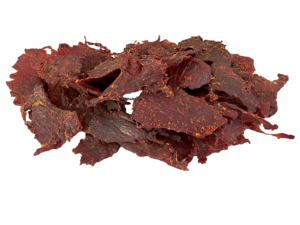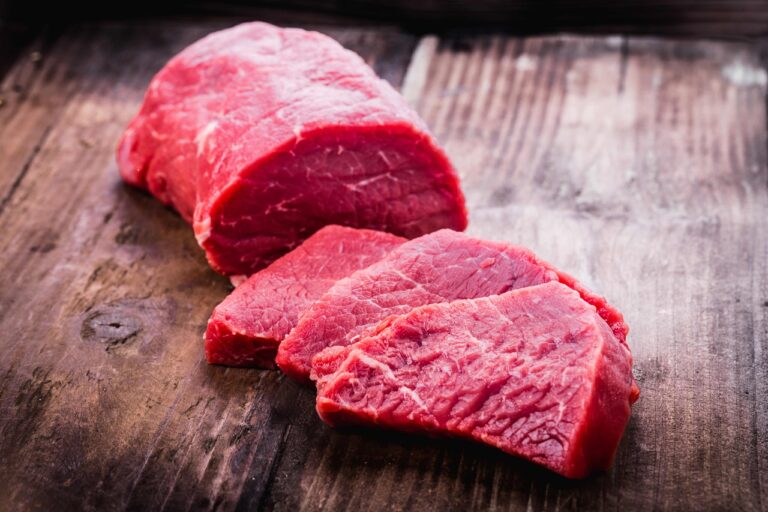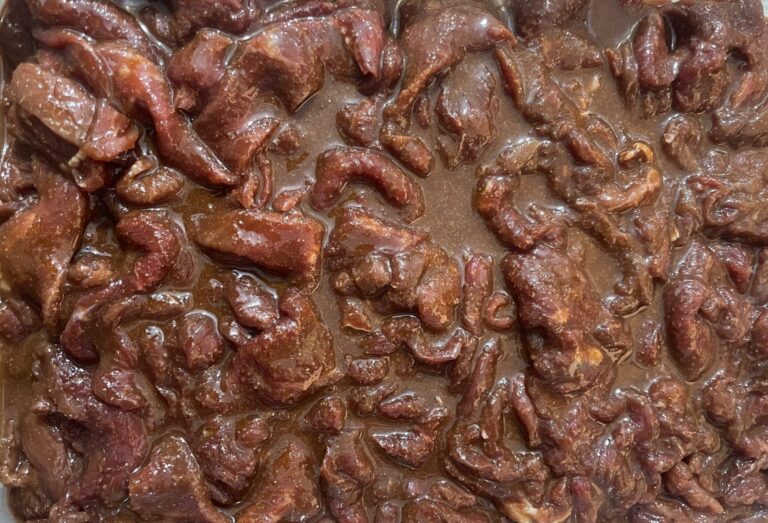
Discover the mouthwatering world of beef jerky with our comprehensive guide! From its history to the
best recipes, learn everything you need to become a jerky connoisseur and satisfy your carnivorous
cravings..
The Ultimate Guide to Beef Jerky:
Everything You Need to Know
In recent years, beef jerky has experienced a surge in popularity as a convenient and protein-packed snack. Whether you’re a seasoned jerky connoisseur or new to this dried meat delicacy, this ultimate guide will provide you with everything you need to know about beef jerky. From its basics and nutritional value to the different types available, the process of making it, and tips for storing and preserving it, we’ve got you covered.
Understanding the Basics
What is Beef Jerky?
Beef jerky is a form of dried and cured meat, typically made from lean cuts of beef. It has a long history dating back thousands of years and is renowned for its long shelf life and portability.
The history of Beef jerky
The origins of beef jerky can be traced back to ancient civilizations that relied on the preservation of meat for their survival.
Native Americans, for example, used this method to transform meat into an easily transportable and long-lasting food source.
Picture this: a group of Native American hunters embarking on a long and arduous journey through the wilderness. They needed sustenance that would not spoil during their travels, and that’s where beef jerky came to the rescue.
By drying and curing the meat, they could
ensure its preservation for weeks or even months, allowing them to venture far and wide without worrying about food spoilage.
Over time, beef jerky has evolved from a necessity to a popular snack enjoyed around the world. Its enduring appeal lies in its unique flavor and texture. The process of drying and
curing the meat not only extends its shelf life but also enhances its taste. The result is a savory and chewy treat that satisfies cravings and provides a satisfying snack for any
occasion.
Nutritional Value of Beef Jerky
Beef jerky is not only delicious but also packs a nutritional punch. It is a fantastic source of high-quality protein, making it an ideal snack for athletes and individuals looking to increase their protein intake. But that’s not all! Did you know that beef jerky is also a good source of essential vitamins and minerals? It contains iron, which is crucial for oxygen transport in the body, as well as zinc, which plays a vital role in immune function and wound healing. B vitamins, such as niacin and vitamin B12, are also present in beef jerky, supporting energy production and
overall well-being.
Additionally, beef jerky is low in fat and carbohydrates, making it a suitable option for those following a low-carb or ketogenic diet. It provides a satisfying snack without derailing your dietary goals.
So, whether you’re a hiker in need of a lightweight and nutritious snack or simply someone who enjoys the rich flavors of dried and cured meat, beef jerky is a versatile and delicious
choice that has stood the test of time.
Different Types of Beef Jerky
Traditional Beef Jerky
Traditional beef jerky is the classic variety that most people are familiar with. It is typically marinated in a blend of spices, salt, and other flavorings before being dried or smoked.
The end result is a savory and chewy snack with a slightly salty and smoky taste. Traditional, beef jerky comes in various flavors, ranging from teriyaki to black pepper and everything inbetween.
But did you know that the process of making traditional beef jerky goes back centuries?
Native American tribes used to preserve meat by drying it in the sun or over a fire. They would season the meat with local herbs and spices, creating a delicious and portable source of sustenance.
Today, the art of making traditional beef jerky has been refined, with modern techniques and flavor combinations. Whether you prefer a bold and spicy kick or a milder, more traditional flavor, there is a type of traditional beef jerky to suit every palate.
Gourmet Beef Jerky
For those seeking a more elevated jerky experience, gourmet beef jerky offers a wide range of unique flavors and premium ingredients. These artisanal jerkies often incorporate ingredients like truffle oil, bourbon, or specialty spices to create a gourmet snacking experience.
With their attention to flavor profiles and high-quality ingredients, gourmet beef jerkies are perfect for those who enjoy a touch of luxury in their snacking choices.
Imagine sinking your teeth into a tender strip of beef jerky infused with the rich and earthy flavors of truffle oil. Or savoring the smoky sweetness of bourbon-infused jerky, with hints of caramel and vanilla dancing on your taste buds. Gourmet beef jerkies take snacking to a whole new level, offering a symphony of flavors that will leave you craving more.
Biltong: A South African Variant
While beef jerky is the go-to term in many parts of the world, biltong is a popular dried meat product hailing from South Africa. Similar to jerky, biltong is made by curing and drying thin strips of meat.
Biltong, however, is typically marinated in vinegar and spices before being air-dried rather
than smoked. This results in a softer texture and slightly tangy flavor.
Both biltong and beef jerky offer a delicious and convenient way to enjoy preserved meat, each with its own distinct characteristics.
In South Africa, biltong holds a special place in the hearts and stomachs of its people. It is not just a snack, but a cultural icon. Families gather around to enjoy biltong while watching sports or sharing stories. The process of making biltong has been passed down through generations, with each family adding their own secret blend of spices and techniques.
So, whether you’re a fan of the classic and smoky traditional beef jerky, a connoisseur of gourmet flavors, or curious about the tangy and tender biltong, the world of beef jerky offers a variety of options to satisfy your snacking desires.
The Process of Making Beef Jerky
Selecting the Right Cut of Beef
The key to making delicious beef jerky lies in selecting the right cut of beef. Lean cuts like sirloin, eye of round, or flank steak are preferred, as they are low in fat and yield a chewy texture.
Before slicing the meat, it’s essential to trim off any excess fat, as it can turn rancid during the drying process. Ensuring the beef is sliced against the grain helps tenderize the final product.

Marinating for Flavor
Marinating the beef is a crucial step in beef jerky preparation, as it imparts flavor and tenderizes the meat. A marinade can consist of various ingredients, such as soy sauce, Worcestershire sauce, honey, garlic, and spices.
The sliced beef should be thoroughly coated in the marinade and left to marinate for at least
a few hours or overnight, allowing the flavors to penetrate the meat.

Drying and Dehydrating Techniques
The final step in making beef jerky is drying or dehydrating the marinated meat. Traditional
methods involve air drying the meat or using a smoker to infuse smoky flavors.
However, with the advent of modern technology, dehydrators have become a popular choice for jerky enthusiasts. Dehydrators provide precise temperature control and ensure even drying, resulting in safe and delicious beef jerky.

Storing and Preserving Beef Jerky
Ideal Storage Conditions
To maintain the quality and freshness of your beef jerky, proper storage is essential. Store your jerky in an airtight container or resealable bag to prevent exposure to moisture.
It’s also recommended to keep the jerky in a cool, dark place, away from direct sunlight or heat sources, as these can accelerate the spoilage process.
Shelf Life of Beef Jerky
When stored correctly, beef jerky can have an impressive shelf life. The combination of low
moisture content and the curing process helps extend its usability.
On average, commercially packaged beef jerky can last up to 12 months, while homemade jerky can be enjoyed for approximately 1-2 months.
However, it’s crucial to note that these are general guidelines, and the shelf life may vary depending on factors such as the specific recipe, storage conditions, and added preservatives.
Signs of Spoiled Beef Jerky
While beef jerky has a long shelf life, it is essential to be aware of signs of spoilage to
ensure you’re consuming safe jerky. Look out for any mold, moisture, or off smells.
If your jerky exhibits any of these signs, it’s best to discard it to prevent potential foodborne
illnesses.
With this ultimate guide to beef jerky, you’re now armed with the knowledge to appreciate
and explore the diverse world of this delectable snack. From its humble origins to the
different types available, the process of making it, and tips for storage and preservation, you’re well-equipped to indulge in the addictive flavors of beef jerky while savoring its
convenience and nutritional benefits. So, go ahead and embark on your beef jerky adventures
